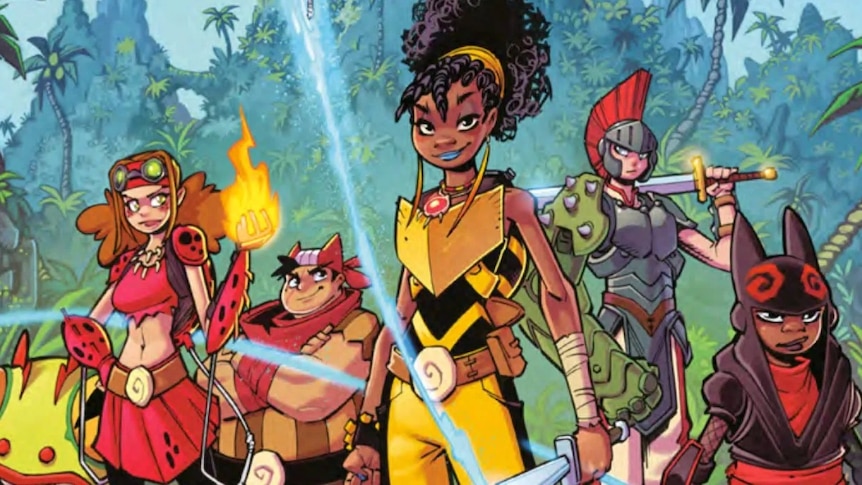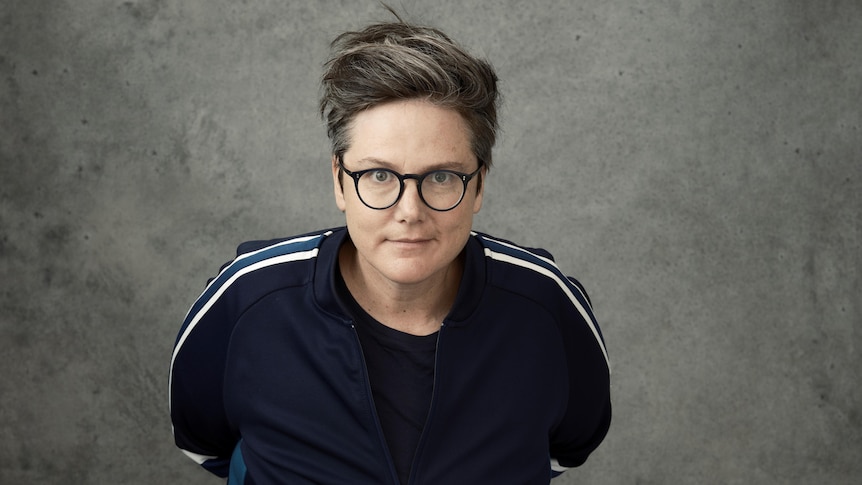C S Pacat is fast becoming one of Australia’s best-selling authors, and they’re doing so by following one very simple formula.
just write what you want to see.
As a queer teen, Pacat didn’t see themselves reflected in anything they read. Or watched on film and TV. Or anywhere else for that matter.
“If nothing in the wider culture is reflecting you, then you feel that you are wrong, or you don’t fit,” Pacat told ABC RN’s Big Weekend of Books.
“[There’s] the idea that monsters and vampires can’t see their own reflection.
“Not being able to see yourself makes you feel like a monster.”
Which is ironic, because the fantasy fiction world of monsters and magic is where Pacat found their home. Or rather, where they created their home.
CS Pacat released their first novel, Captive Prince, 15 years ago as an online fiction.
Centered around the romance between two princes of rival countries, it’s also set in a homonormative world — a world where LGBTQIA characters are normalized and hetero lifestyles are not assumed.
“I grew up in the 80s and 90s, where there were very few queer characters… and if they did exist, they would often exist in structures of oppression.”
“It used to give me the feeling that what it meant to be queer was to be oppressed. So, it was really important to me when I started to create fantasy worlds of my own, that I created worlds where it was normal to be LGBTQ+ .”
That approach paid off for Pacat in more ways than one.
After being told by multiple publishers that people weren’t interested in queer stories, the novel garnered a large and loyal following via the online network LiveJournal, and a publishing deal with Penguin soon followed.
“I knew, as [fans] they were telling me that the market did exist. But at that time, the market mostly existed online.”
“It was a community of people almost beta-testing what would be the stories that would explode into the commercial mainstream about a decade later.”
Since the success of the Captive Prince novels, Pacat’s also turned their attention to graphic novels—creating the series Fence, with a story set in the world of competitive fencing.
Gatekeepers have begun ‘demanding diversity’
Pacat believes we’ve now entered a golden age of publishing where the gatekeepers who once resisted inclusivity are demanding diversity and encouraging under-represented writers to push boundaries.
“This is a starving market of people who have wanted to see themselves in stories for such a long time, that when those stories do appear, we turn out in droves to read them,” says Pacat.
Tom Taylor agrees we’re entering a golden age of diversity in storytelling.
The graphic novelist and comic writer came to global attention last year when he unleashed a bisexual Superman into the DC Universe — Jonathan Kent, the son of Clark Kent and Lois Lane.
“We had people contacting us to say they came out that day. They saw the news and they came out to their friends and family. Not just young people, but people in their 40s,” says Taylor.
Of course, there were the haters too, but for Taylor the positivity far outweighed any backlash.
“People contacted us from countries where they can’t legally come out … just to say that we’d made their lives a little bit better that day,” he says.
Following the success of gay Superman, Taylor was asked to introduce a trans character to the DC Universe, and Dreamer/Nia Nal (played by actor Nicole Maines) is now the first trans superhero on television.
“We are getting to tell different stories now and we’re doing it in collaboration with the people at the top,” he says.
“It’s no longer us saying ‘Hey, do this please, please, please,’ and getting rejected. It’s them saying, ‘Yeah, absolutely.'”
While some sections of the publishing industry have responded to the thirst for more inclusive works, it’s genre fiction, such as fantasy and superhero stories, which has led the charge.
For Pacat it’s the perfect setting for bold experimentation.
“Genre fiction is free from the shackles of realism,” Pacat says. “The world of gods and monsters is a wonderful playground for freedom of expression, ideas, and experiences.”
And superheroes especially are having their moment in the sun. Taylor thinks it has something to do with the uncertain times that we live in.
“There have been times historically when we’ve gravitated towards superheroes. Times of war, times of recession,” he says.
“There’s so much disenchantment with our current set-up, with governments that aren’t doing enough, with corporations operating in greedy ways, only to benefit themselves.”
“We look to superheroes to show us something better than what we have. People just want to see good people doing good.”
When it comes to representation, there’s less room for confusion with visual storytelling, according to Pacat, and the reader is less likely to project their own biases into the story.
As an example, they cite the controversy that arose when The Hunger Games moved from the page to the cinema screen and some readers were surprised to realize that the character Rue was black.
“Many readers just hadn’t noticed that she was black when they read the book, because they just brought their sort of white interiority to their reading and cast the book with white people.”
“Seeing is believing. If I put something into a comic, then the reader cannot help but know that it happened.”
Who gets to decide what’s a real book?
For as long as comics and graphic novels have been around they’ve been dismissed by some as “low brow.”
“There’s been such a stigma attached to comics and a stigma attached to readers of comics too,” says Taylor.
“This is a gatekeeping issue. It’s about who gets to decide what is a book and what isn’t a book. And if someone says it’s not a book then why should that comic or graphic novel be sold in bookshops?”
When he first wrote The Deep, Taylor couldn’t find it on any bookstore shelf in Australia. It’s a different story now that it’s been turned into a globally successful TV series.
“There’s money in comics. That’s part of what’s maybe changed people’s minds.”
He feels the industry has also realized that comics and graphic novels are a gateway drug for reluctant readers.
“For teens who may have fallen out of the habit of reading, they’re page turners, they’re visual, they’re engaging,” says Taylor.
“They have great stories and lots of emotion. They’re the greatest literacy tool.
He adds that graphic novels are the number one most stolen genre of book from libraries. why? “Because young people want to read them!”
But do we really need more superheroes? Hell yes, according to Pacat.
“When we feel powerless it’s wonderful to be able to escape into a character that’s very powerful and can use that power to change things for the better.
“Superheroes make us feel like it’s possible to enact change.”
CS Pacat and Tom Taylor were in conversation with Stop Everything!’s Beverley Wang as part of ABC RN’s Big Weekend of Books. Catch up on interviews with some of your favorite authors — and others we know you’ll love — on the ABC listen app.
.


